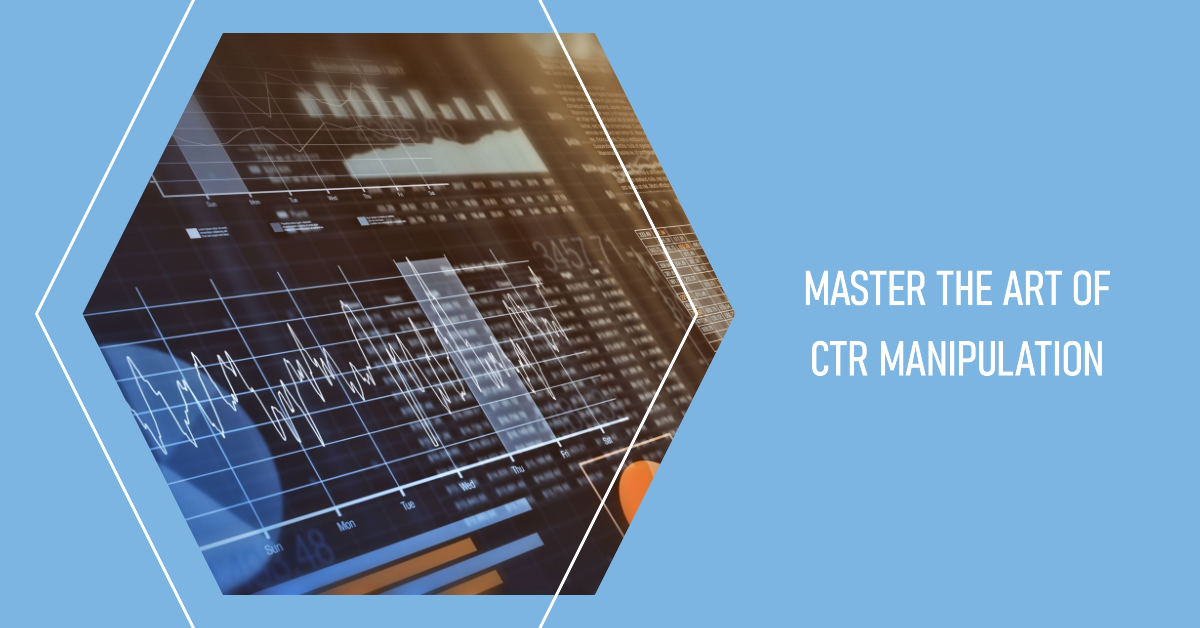CTR Manipulation Press Release-- Announcing New Techniques for CTR Optimization
CTR Manipulation Press Release-- Announcing New Techniques for CTR Optimization
Blog Article
CTR Manipulation: A Video Game Changer for Digital Campaigns
The rise of CTR adjustment has actually unquestionably transformed electronic advertising techniques, offering marketing professionals with devices to enhance involvement and drive website traffic successfully. What ramifications might this balancing act hold for the future of digital campaigns?
Comprehending CTR Adjustment
Although click-through price (CTR) adjustment might appear like a simple method in digital marketing, it includes a variety of methods intended at synthetically blowing up engagement metrics. This control can take numerous forms, consisting of the usage of click farms, robots, or deceptive advertisement placements that misinform consumers right into clicking. These approaches can jeopardize the honesty of efficiency data, making it challenging for online marketers to determine the authentic effectiveness of their projects.
Moreover, CTR control raises honest problems, as it undermines the openness of electronic advertising. The dependence on inflated metrics can result in illinformed advertising and marketing decisions, skewing source allowance and project techniques. Consequently, services might invest greatly in channels and tactics that show up effective yet do not generate actual involvement or conversions.

Advantages of Click-Through Rate Optimization
Enhancing click-through rate (CTR) is vital for boosting the performance of digital advertising and marketing projects. A greater CTR shows that a bigger percentage of users are involving with the material, which can result in increased website web traffic and much better conversion prices. By enhancing CTR, brands can effectively designate their marketing resources to efforts that generate the greatest returns.
One of the primary benefits of CTR optimization is the capacity for boosted ad placement and reduced expenses - CTR Manipulation. Systems like Google Ads award higher CTRs with far better ad positioning and minimized cost-per-click (CPC), allowing marketing professionals to extend their spending plans even more. In addition, a well-optimized CTR can enhance brand name visibility, as greater engagement prices typically correlate with boosted organic reach

Strategies for Effective CTR Control
To properly control click-through prices (CTR), online pop over to this web-site marketers can use a variety their explanation of calculated strategies that enhance individual involvement and drive traffic. One essential method is enhancing advertisement copy to produce engaging and action-oriented language. CTR Manipulation. Making use of strong call-to-action (CTA) phrases motivates customers to take immediate action, enhancing the chance of clicks
Another efficient strategy is A/B testing, which enables marketing professionals to contrast different advertisement variants. By systematically examining efficiency metrics, they can identify which aspects reverberate ideal with the target market, consequently fine-tuning their methods for optimal influence. In addition, leveraging aesthetically enticing graphics and succinct messaging can record focus promptly, making it extra probable that users will involve.

Finally, enhancing landing web pages to make sure a seamless customer experience can minimize bounce prices and motivate further interaction, inevitably cultivating greater CTR. By incorporating these methods, marketing experts can effectively adjust CTR to accomplish their campaign objectives.
Measuring Success in Digital Projects
Determining success in digital projects calls for a clear understanding of crucial performance indicators (KPIs) that straighten with campaign objectives. KPIs function as measurable metrics that assist evaluate the efficiency of various strategies employed throughout the campaign. Common KPIs include click-through rates (CTR), conversion rates, price per procurement (CPA), and return on investment (ROI)
To successfully gauge success, it is essential to establish particular, measurable goals at the outset of the project. If the main goal is to enhance brand name understanding, metrics such as impressions and involvement rates might be prioritized. In contrast, projects concentrated on straight sales would certainly take advantage of a more detailed evaluation of conversion Click Here rates and profits created.
Regular analysis of these KPIs makes it possible for marketers to make data-driven choices, enhancing their techniques in real-time. Using analytical devices can assist in tracking efficiency and determining fads, allowing for speedy changes to enhance project outcomes. Eventually, a detailed method to determining success not only highlights areas for renovation but additionally enhances the overall performance of electronic marketing efforts, driving continual development and engagement in the long-term.
Future Fads in Digital Advertising
Anticipating the future of digital marketing exposes a landscape formed by fast technical advancements and changing consumer behaviors. As expert system and equipment knowing proceed to progress, marketing professionals will increasingly leverage these technologies to individualize campaigns at an unmatched range. Predictive analytics will certainly make it possible for brands to expect customer needs, maximizing advertisement placements and material shipment in actual time.
Additionally, the increase of voice search and wise tools is transforming how customers communicate with digital content. Marketers will certainly require to adapt their approaches to ensure exposure across multiple systems, including voice-activated assistants. This shift demands a concentrate on conversational advertising, emphasizing interaction via discussion rather than conventional promotional tactics.
Furthermore, privacy problems are triggering changes in information collection methods. Transparency and moral data use will become paramount, driving brand names to foster trust fund and loyalty amongst consumers. The ongoing development of social media systems will additionally influence marketing methods, with a heightened focus on credibility and user-generated content.
Conclusion
In summary, CTR control represents a substantial advancement in digital marketing methods, supplying immediate benefits through improved involvement metrics. However, the honest considerations surrounding such methods demand a cautious strategy to ensure long-lasting brand honesty and real target market link. By striking an equilibrium between optimization strategies and authentic interaction, online marketers can cultivate sustainable connections with consumers. The recurring evolution of electronic marketing will certainly depend on this fragile interplay, forming the future landscape of brand-consumer communications.
Report this page